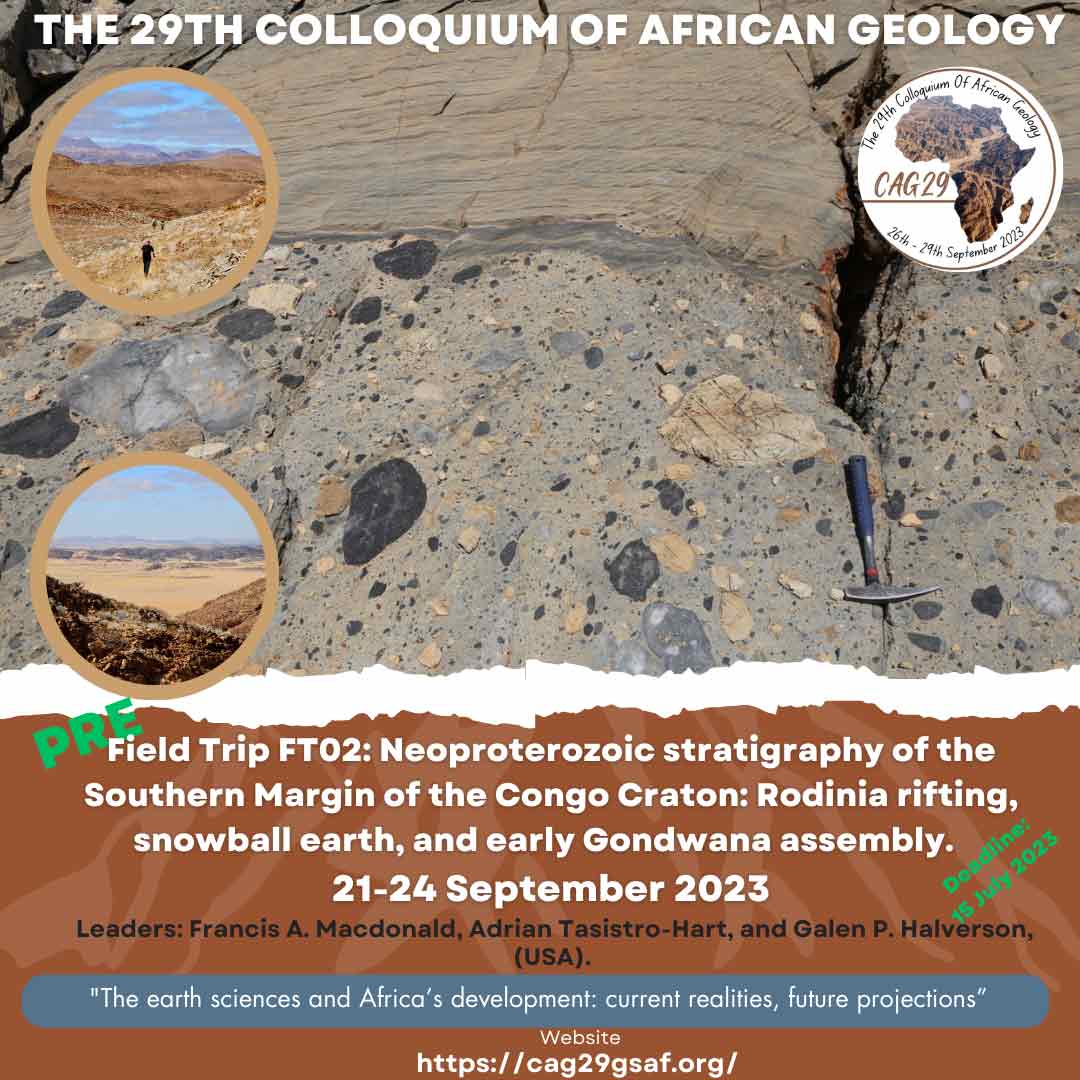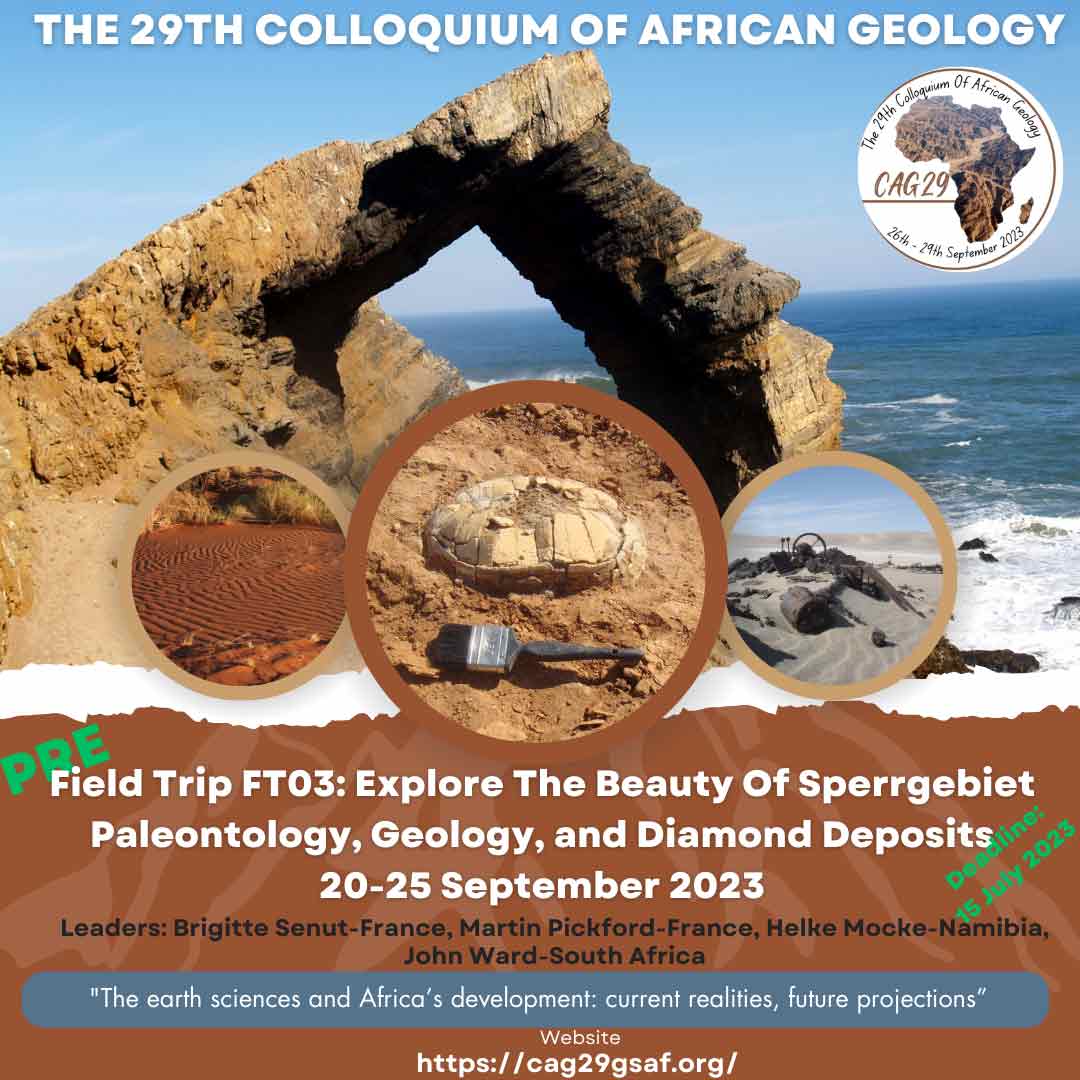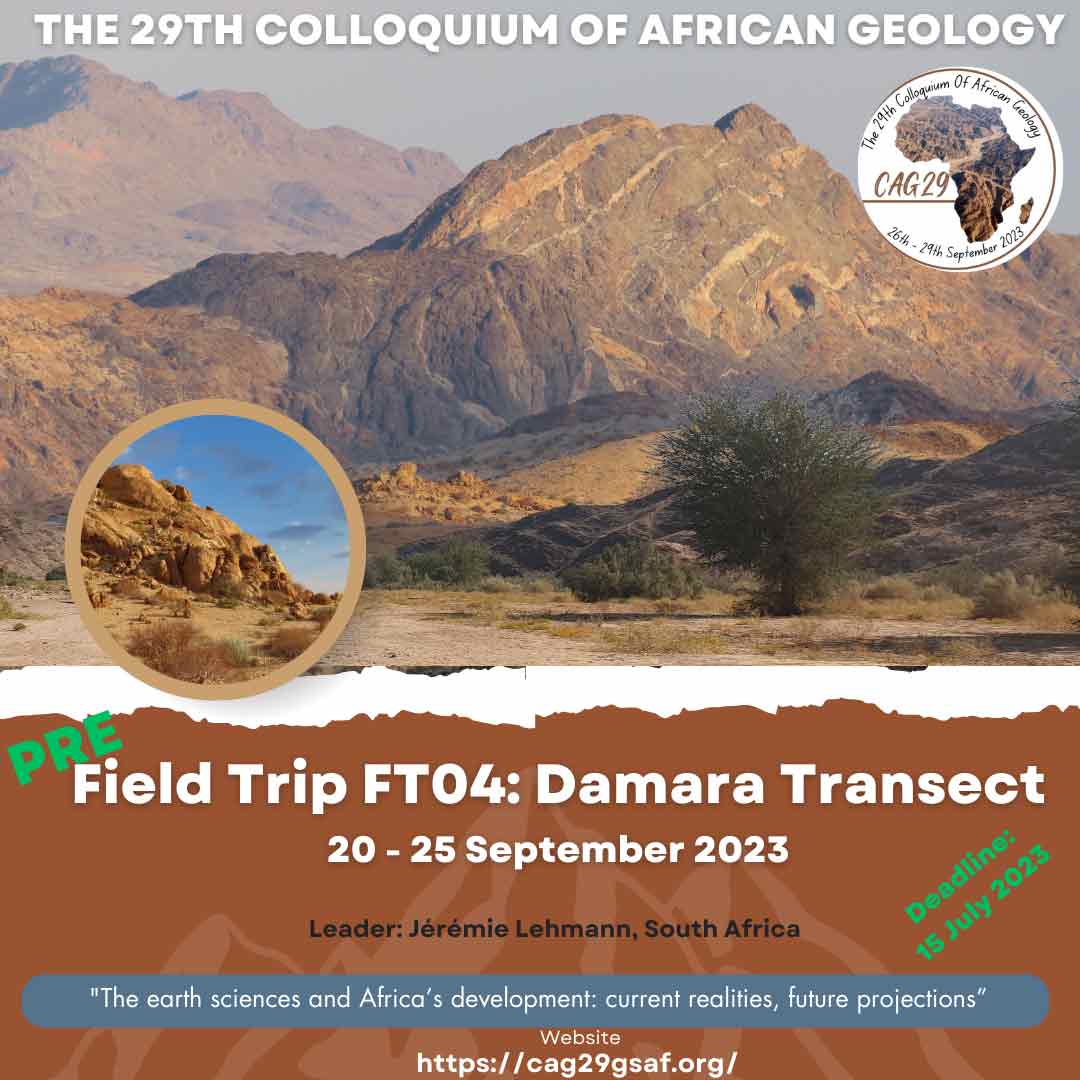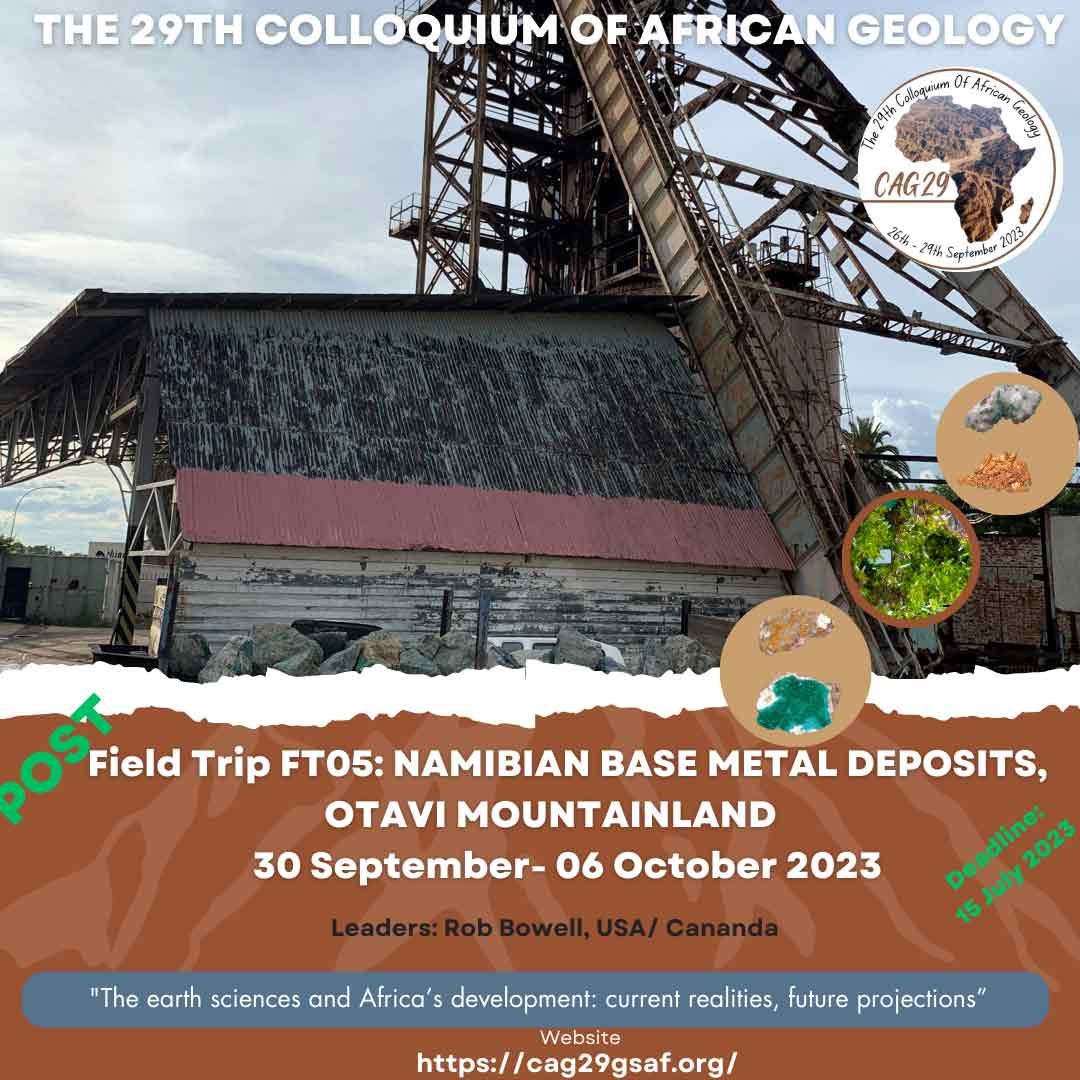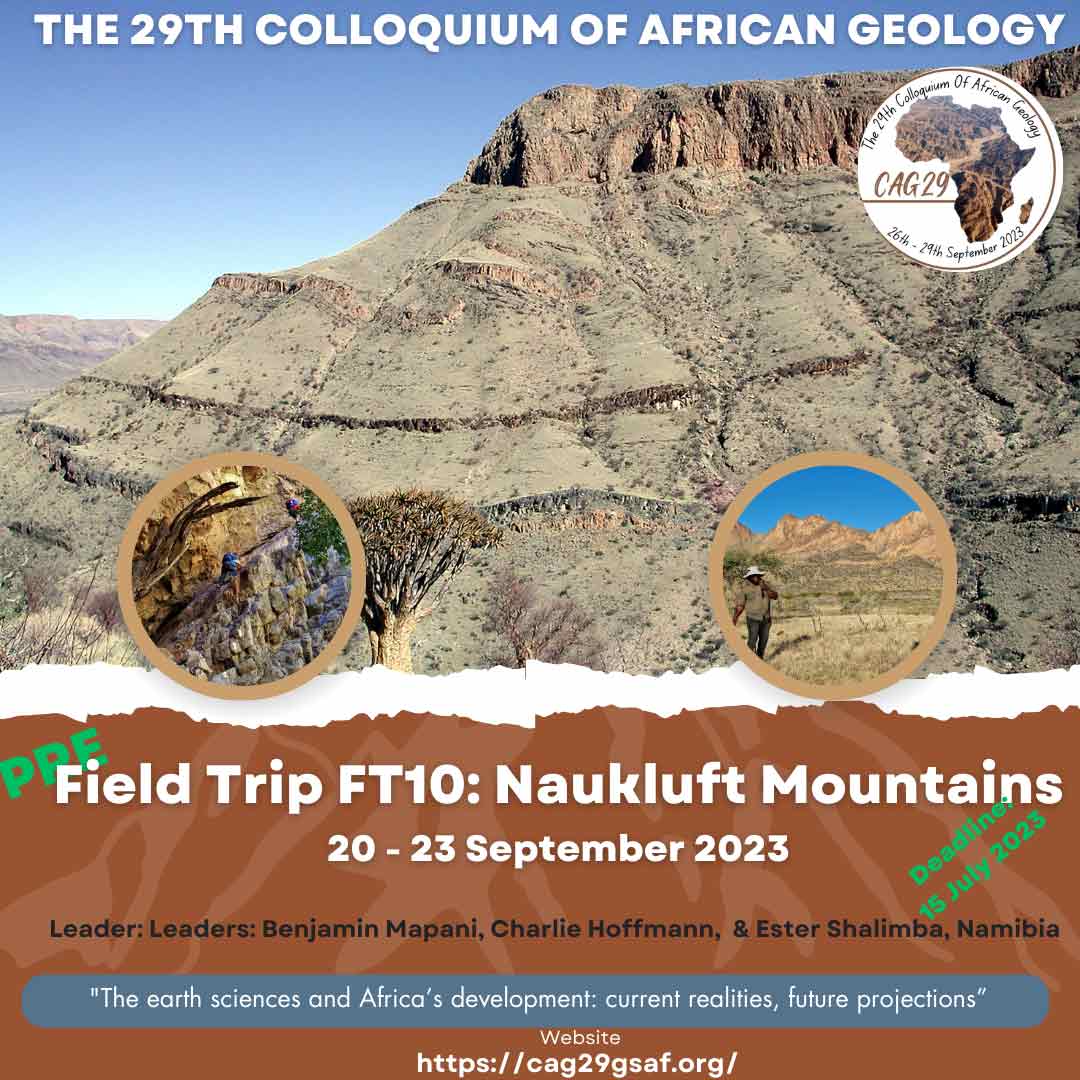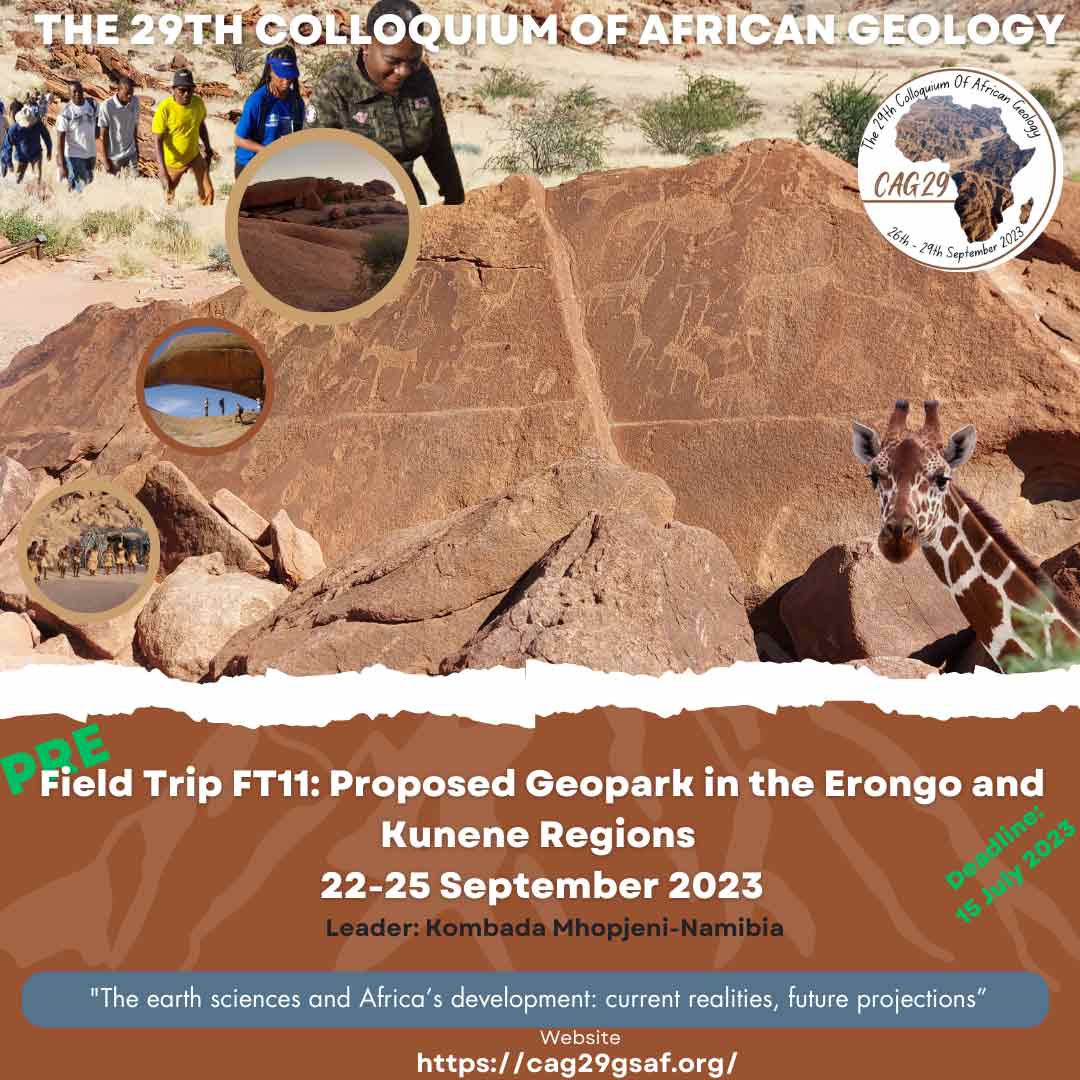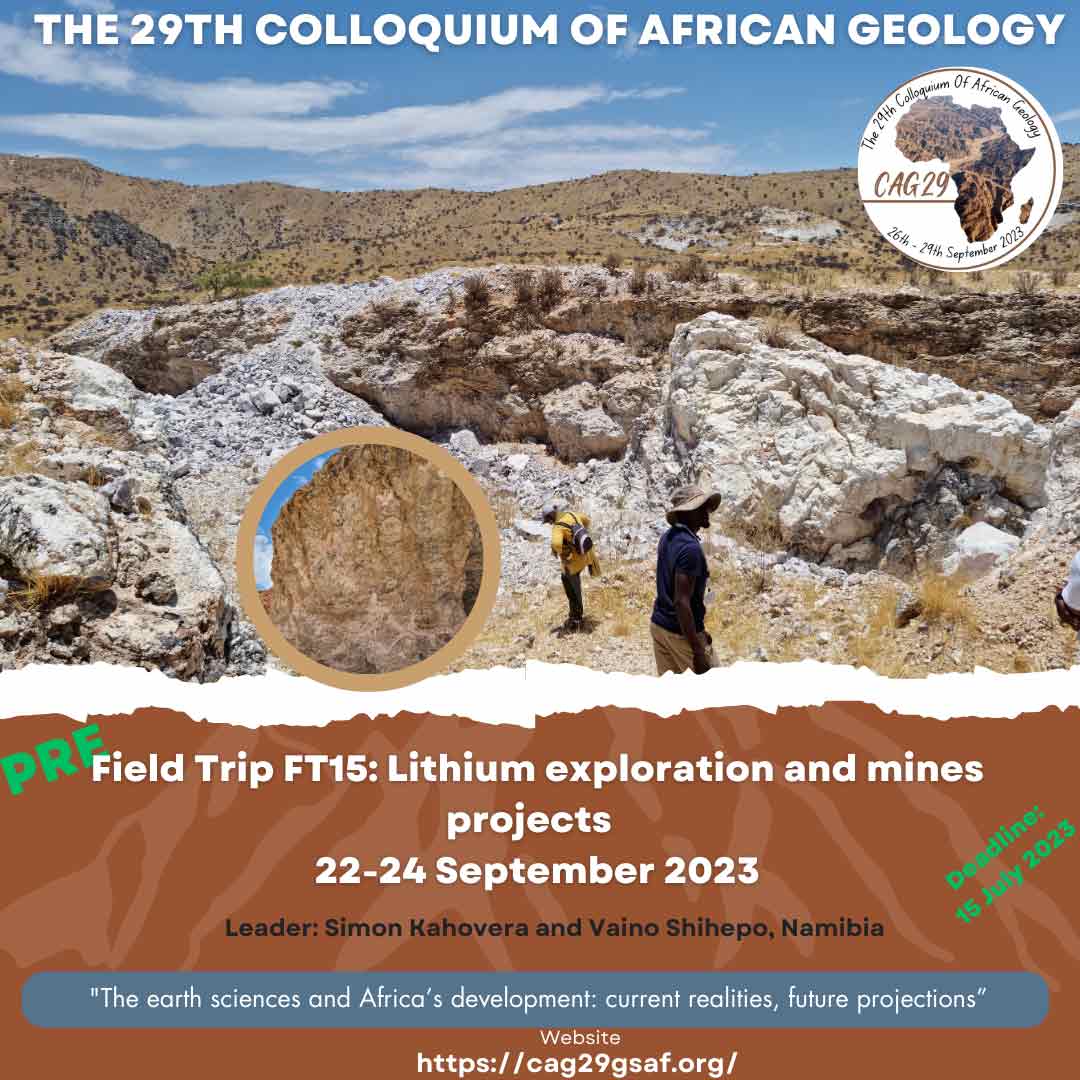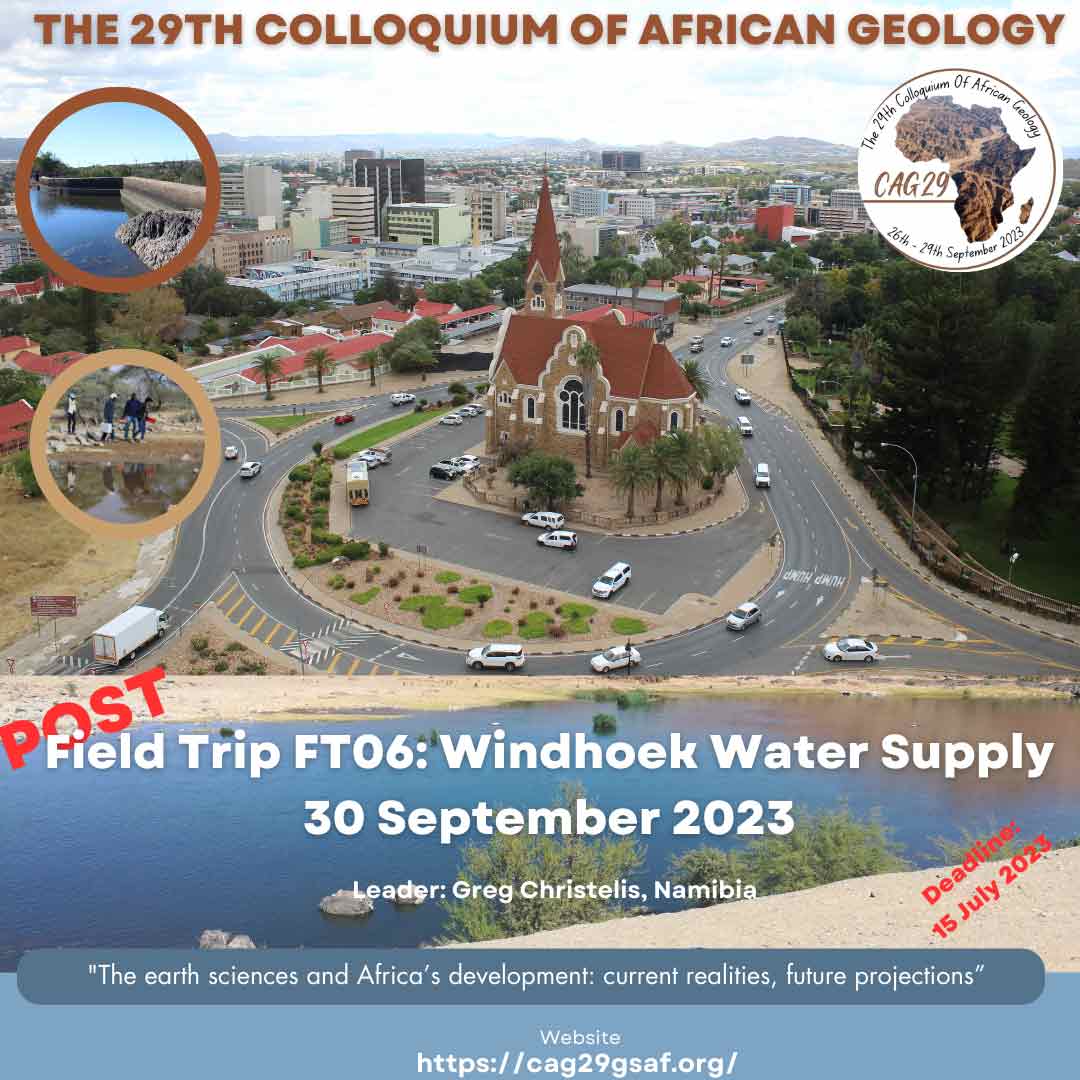Duration: 20-25 September 2023
The Sperrgebiet is a treasure trove of palaeontological sites. This trip would visit Palaeogene and Neogene fossil sites (Eocliff in the Klinghardt, Black crow and Eocene Langental; Neogene fossil sites such as Langental, Grillental and Elisabethfeld). The Bogenfels will also be visited. The Sperrgebiet (Forbidden Zone) of Namibia was declared out-of-bounds by the German Government in 1908 soon after the discovery of diamonds close to Kolmanskop 10 km inland from Lüderitz. The zone, now known as the Tsau-#Khaeb National Park, extends from the Aus-Lüderitz road in the north to the Orange River in the south (ca 200 km), and from the Atlantic coast in the west to the Great Escarpment in the east (ca 70-100 km).
The Basement rocks of the Sperrgebiet comprise Precambrian gneisses, shales, quartzites, dolomites and various intrusive rocks (syenite batholiths, dolerite dykes). The superficial deposits of the Sperrgebiet consist of a variety of sedimentary and volcanic rocks, as well as alteration products related to volcanic activity and near-surface processes driven by groundwater flowage as well as to processes of near-surface induration of superficial deposits under desert conditions. Close to the coast there are substantial beach deposits which accumulated when sea-level was higher than it is today, and there are analogous deposits offshore, laid down when sea-level was lower than it is today, notably during the Oligocene.
All the diamonds found in the Sperrgebeit have been obtained from these superficial deposits close to the coast, the onland ores being prevalent in the Salt Namib where the surface deposits are rich in salt and often gypsum, the result of long term transport of sea spray inland for up to 20 km. In the Inner Namib in contrast, the soils and surface deposits generally lack salt.
Finally, the Southern Namib is known for the extremely mobile dune trains that traverse northwards, predominantly in the Trough Namib and to a lesser extent the Innen Namib, where they eventually contribute their sand to the Namib Sand Sea of the Namib-Naukluft Park. Some of these dunes move up to 300 metres per year.



